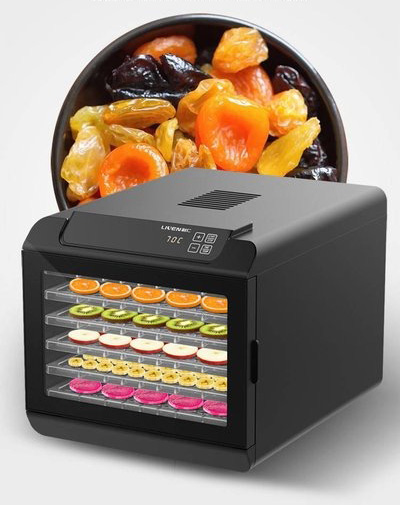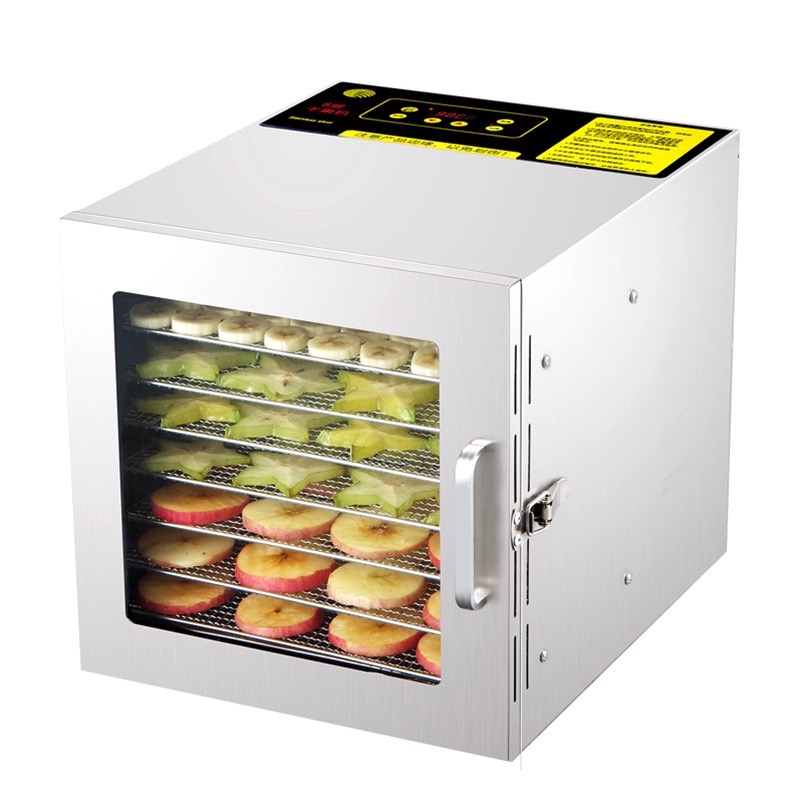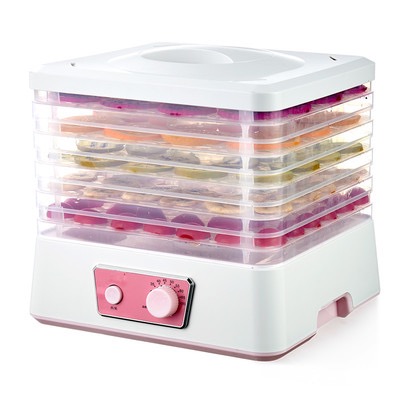
Content Menu
● Introduction to Fruit Drying Technology
● Understanding Fruit Dryer Machines
>> How Fruit Dryer Machines Work
● Types of Fruit Dryer Machines
>> 1. Commercial Fruit Dehydrators
>> 2. Industrial Food Dryers
>> 3. Electric Fruit Drying Machines
>> 4. Multi-Tray Food Dehydrators
● Key Features to Consider When Choosing a Fruit Dryer Machine
>> 1. Capacity
>> 2. Temperature Control
>> 3. Airflow Design
>> 4. Material and Construction
>> 5. Energy Efficiency
● Benefits of Using Fruit Dryer Machines
● Applications of Fruit Drying Equipment
>> 1. Food Processing Industry
>> 2. Agriculture and Farming
>> 3. Health Food Sector
>> 4. Hospitality Industry
● Innovations in Fruit Drying Technology
● Maintenance and Care of Fruit Dryer Machines
● Choosing the Right Fruit Dryer Machine for Your Needs
● The Future of Fruit Drying Technology
● Conclusion
● Frequently Asked Questions
>> 1. What is the average price range for a home-use fruit dryer machine?
>> 2. How long does it take to dry fruits in a food dehydrator?
>> 3. Are there any fruits that cannot be dried in a fruit dryer machine?
>> 4. How do commercial fruit dryer machines differ from home-use models?
>> 5. What are the energy consumption considerations for using a fruit dryer machine?
Introduction to Fruit Drying Technology
In today's fast-paced world, the demand for healthy, convenient snacks has never been higher. Enter the fruit dryer machine, a revolutionary piece of equipment that has transformed the way we preserve and enjoy nature's sweet offerings. From small home units to large industrial setups, fruit dryer machines have become an essential tool in both domestic kitchens and commercial food processing facilities.
Understanding Fruit Dryer Machines
A fruit dryer machine, also known as a food dehydrator or fruit dehydrator, is a device designed to remove moisture from fruits, vegetables, and other food items. This process extends the shelf life of produce, preserves nutrients, and creates delicious, portable snacks. The technology behind these machines has evolved significantly over the years, resulting in more efficient and versatile models.
How Fruit Dryer Machines Work
The basic principle of fruit drying is simple: warm air circulates around the food, gradually removing moisture. Most modern fruit dryer machines use a combination of heat and air flow to achieve optimal results. Here's a breakdown of the process:
1. Preparation: Fruits are washed, peeled (if necessary), and sliced into uniform pieces.
2. Loading: The prepared fruit is spread evenly on trays within the machine.
3. Drying: Warm air circulates through the unit, slowly evaporating moisture from the fruit.
4. Monitoring: Temperature and time are controlled to ensure proper drying without compromising quality.
5. Cooling: Once dried, the fruit is allowed to cool before packaging.

Types of Fruit Dryer Machines
There are several types of fruit dryer machines available on the market, each catering to different needs and capacities:
1. Commercial Fruit Dehydrators
These large-scale machines are designed for industrial use, capable of processing significant volumes of fruit. Commercial fruit dehydrators often feature multiple trays, precise temperature controls, and high-capacity fans for efficient drying.
2. Industrial Food Dryers
Industrial food dryers are versatile machines that can handle a wide range of products, including fruits, vegetables, herbs, and even meats. These units are built for continuous operation and often incorporate advanced features like humidity control and energy-efficient designs.
3. Electric Fruit Drying Machines
Perfect for home use or small businesses, electric fruit drying machines offer convenience and ease of use. These compact units typically have adjustable temperature settings and multiple trays for drying various fruits simultaneously.
4. Multi-Tray Food Dehydrators
Multi-tray food dehydrators are popular among enthusiasts and small-scale producers. With the ability to add or remove trays, these machines offer flexibility in terms of capacity and can handle different types of produce in a single drying session.
Key Features to Consider When Choosing a Fruit Dryer Machine
When selecting a fruit dryer machine, several factors should be taken into account:
1. Capacity
The size and capacity of the machine should match your production needs. Home users might opt for smaller units with 5-10 trays, while commercial operations may require industrial-sized dryers with 20 or more trays.
2. Temperature Control
Precise temperature control is crucial for achieving optimal results with different types of fruits. Look for machines that offer adjustable temperature settings, typically ranging from 95°F to 165°F (35°C to 74°C).
3. Airflow Design
Efficient airflow ensures even drying across all trays. Horizontal airflow systems are generally preferred as they provide more consistent results compared to vertical systems.
4. Material and Construction
Stainless steel food dehydrators are popular due to their durability, ease of cleaning, and resistance to corrosion. For commercial use, food-grade stainless steel is often a requirement.
5. Energy Efficiency
Modern fruit dryer machines are designed with energy efficiency in mind. Look for models with good insulation and energy-saving features to reduce operating costs.

Benefits of Using Fruit Dryer Machines
Investing in a fruit dryer machine offers numerous advantages:
1. Extended shelf life of produce
2. Preservation of nutrients and flavors
3. Reduction of food waste
4. Creation of healthy, portable snacks
5. Cost savings on seasonal fruits
6. Versatility in food preservation
Applications of Fruit Drying Equipment
Fruit drying equipment finds applications across various industries:
1. Food Processing Industry
Large-scale fruit processing facilities use industrial food dryers to produce dried fruits for retail sale, ingredient production, and export markets.
2. Agriculture and Farming
Farmers and orchards utilize fruit drying equipment to preserve excess harvest and create value-added products.
3. Health Food Sector
The growing demand for healthy snacks has led to an increase in the use of fruit dryer machines in the production of natural, preservative-free dried fruit products.
4. Hospitality Industry
Restaurants, hotels, and catering services use food dehydration machines to create unique garnishes, ingredients, and snacks.
Innovations in Fruit Drying Technology
The field of fruit preservation technology is constantly evolving. Recent innovations include:
1. Smart controls and IoT integration for remote monitoring and operation
2. Improved energy efficiency through advanced heat recovery systems
3. Hybrid drying technologies combining different methods for optimal results
4. Eco-friendly designs using sustainable materials and renewable energy sources
Maintenance and Care of Fruit Dryer Machines
Proper maintenance is essential for ensuring the longevity and efficiency of your fruit dryer machine:
1. Regular cleaning of trays and interior surfaces
2. Inspection and replacement of filters as needed
3. Lubrication of moving parts (for commercial machines)
4. Calibration of temperature and humidity sensors
5. Proper storage when not in use
Choosing the Right Fruit Dryer Machine for Your Needs
Selecting the appropriate fruit dryer machine depends on various factors:
1. Scale of operation (home use vs. commercial production)
2. Types of fruits to be dried
3. Desired production capacity
4. Available space and power requirements
5. Budget considerations
For home users, a compact electric fruit drying machine with 5-10 trays may suffice. Small businesses might opt for a larger capacity multi-tray food dehydrator. Commercial operations should consider industrial food dryers or custom-built fruit processing machinery to meet their specific needs.
The Future of Fruit Drying Technology
As consumer demand for healthy, convenient snacks continues to grow, the fruit drying industry is poised for further innovation. We can expect to see advancements in areas such as:
1. Artificial intelligence-driven drying processes for optimal results
2. Integration with other food processing technologies
3. Development of new drying methods to preserve more delicate fruits
4. Increased focus on sustainability and energy efficiency
Conclusion
Fruit dryer machines have revolutionized the way we preserve and enjoy nature's bounty. From small home units to large industrial setups, these versatile machines offer a wide range of benefits for both consumers and businesses. As technology continues to advance, we can look forward to even more efficient and innovative fruit drying solutions in the future.

Frequently Asked Questions
1. What is the average price range for a home-use fruit dryer machine?
Answer: Home-use fruit dryer machines typically range from $50 to $300, depending on the capacity, features, and brand. Basic models with 5-6 trays can be found at the lower end of this range, while larger capacity units with advanced features may cost more.
2. How long does it take to dry fruits in a food dehydrator?
Answer: The drying time varies depending on the type of fruit, its moisture content, and the thickness of the slices. On average, it can take anywhere from 6 to 36 hours. For example, thinly sliced apples might dry in 6-12 hours, while whole strawberries could take 24-36 hours.
3. Are there any fruits that cannot be dried in a fruit dryer machine?
Answer: While most fruits can be dried, some are not ideal for dehydration due to their high fat or water content. Avocados, for instance, are not typically dried. Very juicy fruits like watermelon can be challenging to dry effectively. It's best to consult your machine's manual or a food dehydration guide for specific recommendations.
4. How do commercial fruit dryer machines differ from home-use models?
Answer: Commercial fruit dryer machines are designed for larger scale operations and often feature:
- Higher capacity (20+ trays)
- More powerful fans and heating elements
- Precise temperature and humidity controls
- Durable, food-grade stainless steel construction
- Continuous operation capabilities
- Advanced monitoring and control systems
5. What are the energy consumption considerations for using a fruit dryer machine?
Answer: Energy consumption varies based on the size and efficiency of the machine. Home-use models typically consume between 300-1000 watts, similar to a small oven. Commercial units can use significantly more power. To minimize energy costs, look for machines with good insulation, energy-efficient features, and consider using them during off-peak electricity hours if possible.












